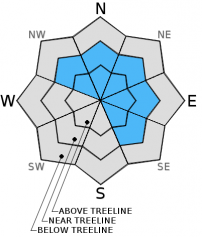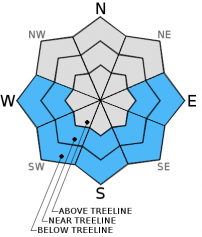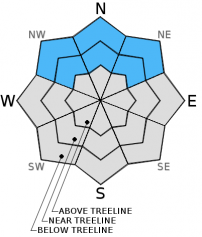| Wednesday | Wednesday Night | Thursday | |
|---|---|---|---|
| Weather: | Mostly cloudy | Mostly cloudy with a slight chance of snow | Mostly cloudy with a slight chance of rain |
| Temperatures: | 38 to 48 deg. F. | 26 to 33 deg. F. | 42 to 49 deg. F. |
| Mid Slope Winds: | Southwest | Southwest | Southwest |
| Wind Speed: | 15 to 30 mph with gusts to 50 mph | 20 to 30 mph with gusts to 40 mph | 15 to 25 mph with gusts to 40 mph |
| Expected snowfall: | 0 | 0 | 0 |
| Wednesday | Wednesday Night | Thursday | |
|---|---|---|---|
| Weather: | Mostly cloudy | Mostly cloudy with a slight chance of snow | Mostly cloudy with a slight chance of rain and snow |
| Temperatures: | 32 to 38 deg. F. | 26 to 32 deg. F. | 32 to 42 deg. F. |
| Ridge Top Winds: | West | Southwest | Southwest |
| Wind Speed: | 45 to 60 mph with gusts to 85 mph | 50 to 70 mph with gusts to 90 mph | 45 to 55 mph with gusts to 80 mph |
| Expected snowfall: | 0 | 0 | 0 |



























